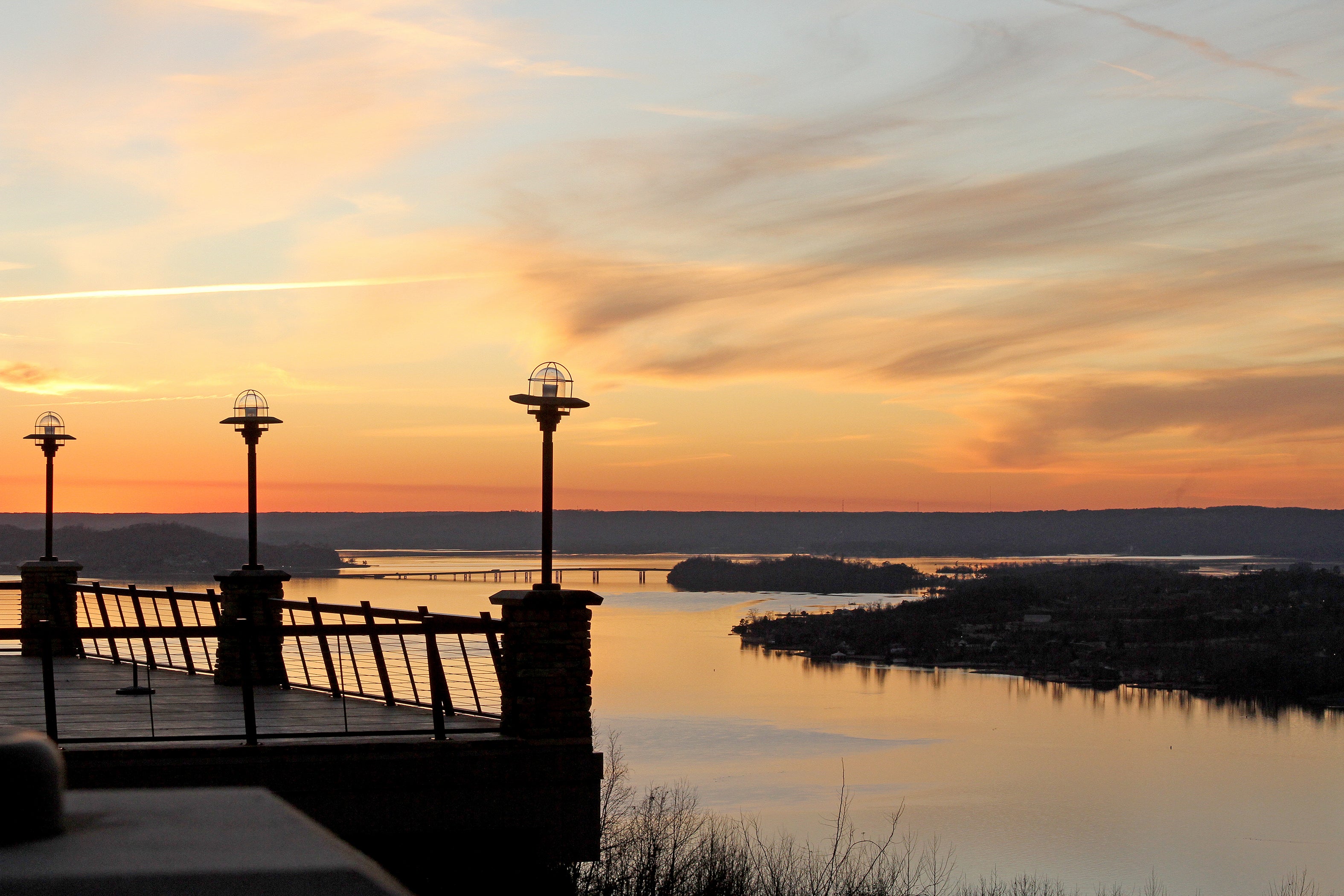By DAVID RAINER, Alabama Department of Conservation and Natural Resources
When the Association of Fish and Wildlife Agencies (AFWA) staff scheduled AFWA’s annual Wildlife Diversity Program Managers Meeting at Lake Guntersville State Park, they didn’t realize the potential distraction just outside the meeting room windows.
Sitting on the banks of one of the most productive fisheries in the nation, Lake Guntersville State Park’s lodge atop Taylor Mountain offers stunning views of the 69,000-acre reservoir on the Tennessee River.
The meeting was the first time the AFWA event had been held in Alabama. The Alabama Department of Conservation and Natural Resources’ (ADCNR) Wildlife and Freshwater Fisheries (WFF) Division hosting.
Mark Humpert, AFWA’s Director of Conservation Initiatives, admitted he was a bit surprised to see the natural diversity and beauty of Alabama’s landscape.
“I really didn’t expect to be in the mountains in Alabama,” Humpert said. “The drive here was just gorgeous, and now with the lake and having this view. This is a group who studied to be biologists, and when you’re in a room with a view like this, it’s good for us. Typically, we’d be in a windowless conference room, and it’s just special to be in this place with this magnificent view.
“When we got here, they (lodge staff) asked if they should pull the shades. We said, ‘No!’”
Humpert said several other revelations about Alabama occurred during meeting week.
“We learned about the incredible diversity here in Alabama,” he said. “This state is really on the map globally for salamanders and aquatic species. We got a chance to learn about the biological riches of Alabama and got to spend some time at Cathedral Caverns.”
Humpert said this meeting has been held for 30 years in late winter, the time of the year when wildlife diversity managers from around the nation get a chance to discuss topics that are affecting their work, spend time together and reinforce relationships.
“This meeting is a little bit unique because the states are getting ready to submit their third generation of their State Wildlife Action Plans (SWAP),” he said. “A lot of this meeting will be about the action plans and the vision for the future of the wildlife diversity programs. We have a small team that surveys all the states to better understand the structures and challenges of wildlife diversity programs.”
Amy Silvano, Section Chief with Alabama Wildlife and Freshwater Fisheries, served as host for the event and talked about the amazing diversity of animals found in Alabama.
“What this meeting means to us is an opportunity for other states to recognize the immense number of non-game species in Alabama,” Silvano said. “We are first in the nation in aquatic biodiversity (fish, mussels, crayfish and snails) and third in the nation for herps (reptiles and amphibians). Hosting this meeting here puts Alabama on the forefront across the nation as being an epicenter of wildlife biodiversity. It gives us great pleasure to have all the state wildlife diversity program managers here to talk about the future and the visions of conservation for both non-game terrestrial and aquatic wildlife.
“This meeting also allows us to showcase what Alabama is doing, in this instance, in terms of non-game species. On Tuesday, we focused specifically on projects and accomplishments of our non-game programs, both aquatic and terrestrial programs, within Alabama. We have people here from Utah. We have people here from Idaho and Montana. Some of those states don’t have the diversity we have and are blessed with in the Southeast. For people to see the complexities of the natural systems and animals we’re dealing with tends to be eye-opening. It also lends to fostering communication among states, networking and problem-solving for future conservation needs for all of these animals.”








